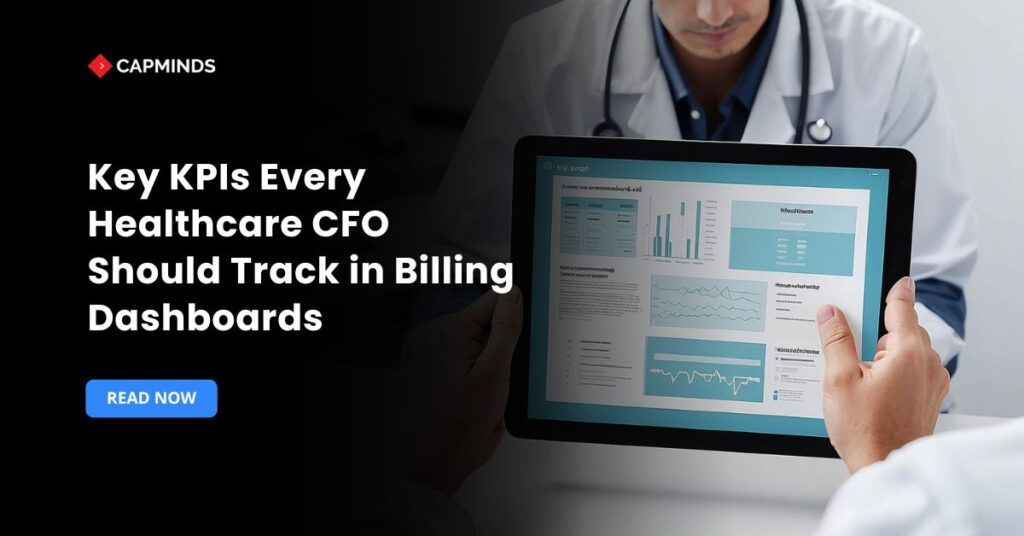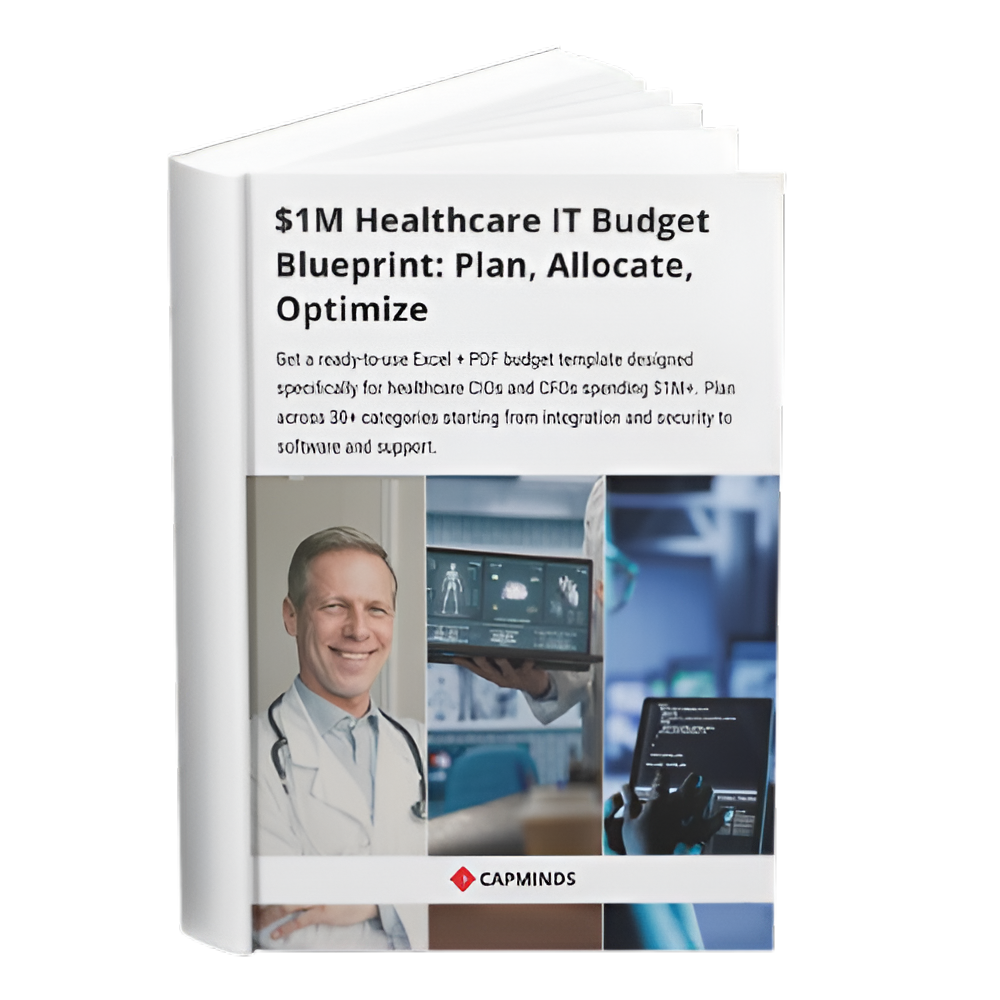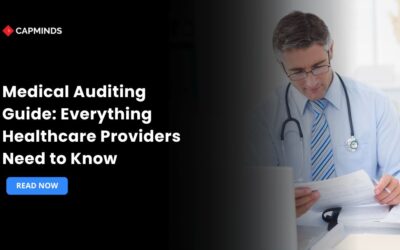Key KPIs Every Healthcare CFO Should Track in Billing Dashboards
In the current healthcare environment, financial visibility is no longer negotiable. Understanding billing performance has a direct impact on cash flow and long-term stability for both small independent clinics and large hospital systems.
CFOs can see the revenue cycle clearly and in real time with billing dashboards. Leaders can make well-informed judgments rather than depending on hunches thanks to this visibility. The stakes are enormous because insurance denials alone cost providers close to $20 billion annually. Organizations may lower risk, increase collections, and safeguard revenue by keeping an eye on the appropriate KPIs.
We’ll cover 8–10 key performance indicators in this post, categorized by income, collections, denials, and efficiency. You’ll discover what each statistic measures, why it’s important, and how to incorporate it into your dashboards to improve financial results.
Related: Custom Dashboards vs. Off-the-Shelf BI in Healthcare: What Does Your Organization Need?
Critical KPIs for Healthcare CFOs to Track in Billing Dashboards
Revenue and Collection Metrics
These indicators demonstrate the effectiveness of your organization in converting services into revenue and cash. They help CFOs assess overall collection performance from both insurance payers and patients:
1. Gross Collection Rate
This KPI measures the total payments received as a percentage of total charges billed. It gives you an idea of the percentage of your billed amount that you really get paid.
Stronger total collections are indicated by a greater gross collection rate; however, keep in mind that this statistic ignores modifications such as charitable care or contractual write-offs.
- CFOs use gross collection rate as a high-level standard of billing performance rather than a specific signal because it’s a wide metric.
- Your gross collection rate needs to be improved if it is much lower than 100% because it indicates that a large percentage of charges are not being converted into cash.
2. Net Collection Rate
Net collection rate goes a step further by measuring payments received against the allowable charges. Unlike gross collection, net collection accounts for factors such as negotiated discounts, bad debt, and other write-offs. This gives a more accurate view of how effectively you collect collectible revenue.
A strong net collection rate means your medical billing department is capturing almost all revenue owed to the organization. If the net collection rate is low, say 85%, it indicates revenue leakage.
CFOs closely watch this metric to ensure the organization is realizing the income it should; upward trends in net collection rate signal improvements in revenue cycle processes.
3. Point-of-Service (POS) Collection Rate
The POS collection rate calculates the difference between the total patient-responsible charges and the amount of money collected up front at the time of service.
It becomes crucial to maximize point-of-service collections as patients incur greater out-of-pocket expenses. A high POS collection rate lowers the quantity of bills issued later and generates cash right now. This reduces the likelihood of bad debt.
- This KPI shows CFOs how successfully the front office staff collects payments.
- A low rate frequently indicates flaws like unclear pricing or staff members’ reluctance to ask for payment. More outstanding balances may result from these problems.
- Enhancing this indicator reduces future write-offs and improves cash flow.
Accounts Receivable Metrics
The rapidity of collections and the condition of outstanding balances are the main topics of accounts receivable KPIs. CFOs can identify trouble spots in the sales cycle and manage cash flow with the aid of these metrics:
1. Days in Accounts Receivable (A/R)
Days in A/R calculates the typical time it takes for your company to get paid following the completion of a service. To put it simply, it’s the amount of time revenue remains in accounts receivable before being converted into cash. This is a direct indicator of cash flow efficiency, the lower it is better. Industry benchmarks often target around 30 days or less in A/R for a healthy revenue cycle.
Trouble is indicated when Days in A/R start to increase. Money isn’t coming in fast enough to pay bills. Delays in invoicing, sluggish payer payments, or inadequate patient balance follow-up are some of the causes.
CFOs use this KPI to identify and address these problems. A decline in A/R days indicates that the billing team is increasing liquidity and collecting more quickly. Patterns can also be found by breaking down the data by payer or location, such as slower collections from insurance or clinics. Targeting issues and improving revenue cycle performance are made simpler by this realization.
2. Accounts Receivable Aging (Over 90 Days)
A/R aging breaks down the length of time receivables have been outstanding into discrete time periods. It indicates the percentage of balances that are current as opposed to past due.
The 90+ day bucket is something that CFOs closely monitor. The likelihood of collection drastically decreases after receivables are older than ninety days. A high percentage in this category indicates backlogs or collection issues.
- For example, if 25% of A/R is more than 90 days old, this frequently indicates unresolved denials, poor follow-up, or unpaid patient bills.
- Leaders can determine where the process stalls by looking at the age breakdown.
- Keeping the majority of receivables inside the 0–30 day period is the obvious objective.
Organizations can protect cash flow and improve recovery by pursuing older accounts before they become uncollectible through regular age reviews.
3. Bad Debt Rate (Write-off Rate)
Bad debt represents the portion of receivables that you can’t collect and ultimately write off as uncollectible.
- The percentage of net patient care revenue, or total accounts receivable, that is written off is known as the bad debt rate.
- This KPI is very important. Every dollar lost to bad debt hurts the bottom line and lowers revenue.
- A rising rate frequently indicates poor financial screening, weak collections, or increasing patient financial distress.
This measure has increased for several providers in recent years. Patients find it more difficult to pay due to higher deductibles and out-of-pocket expenses, which results in a higher percentage of accounts going unpaid. CFOs track bad debt closely, if it’s higher than acceptable benchmarks for your organization, you may need to tighten collection processes.
Conversely, a reduced bad debt rate means that the majority of your billed accounts are finally being paid or settled. In essence, leadership can take action to reduce revenue leakage from uncollectible charges by using this KPI to quantify it.
Claims and Denial Management Metrics
Denials management is a major component of revenue cycle success.
The following KPIs help CFOs evaluate billing quality, identify why revenue is being left on the table, and ensure there are processes to recover payment when claims are initially denied:
1. Clean Claim Rate
The clean claim rate measures the percentage of insurance claims that are submitted correctly the first time, without errors or the need for manual intervention/rework. It’s an indicator of billing accuracy and process quality.
A high clean claim rate indicates that the majority of claims are processed and paid on the initial submission. It’s among the most obvious indicators of a successful billing process.
- Because denied claims slow down everything, this KPI is important. Delays, rejections, or more staff effort spent correcting and resubmitting are the results of each one.
- That prolongs collections and raises costs. A decline in the clean claim rate is cause for concern.
- An excessive number of claims are being stuck, which typically leads to a greater denial rate.
CFOs should interpret this KPI in tandem with denial rates and invest in improvements like staff training, better claim editing software, or more rigorous front-end insurance verification to boost the clean claim rate. Over time, raising this rate will reduce rework and accelerate cash collections.
2. Claims Denial Rate
This KPI tracks the percentage of claims denied by payers out of the total submitted. It answers the question: how often are we getting paid versus being denied? A lower denial rate is obviously preferable, every denied claim represents delayed or lost revenue.
Coding errors, incomplete documentation, problems with patient eligibility, or filing errors are common reasons for denials. A high denial rate raises administrative costs and interferes with cash flow.
CFOs monitor the denial rate as a barometer of revenue cycle health. It’s important to analyze denial reasons as well, if many claims are denied for authorization issues, that points to a front-end scheduling/pre-certification fix, whereas coding-related denials might call for coder education.
3. Claims Appeal Rate
The claims appeal rate is the percentage of denied claims that your organization appeals. Tracking this metric shows how rigorously your team pursues denied dollars.
A higher appeal rate suggests a proactive effort to recover revenue, ideally, most valid denials should be appealed, especially high-value ones. However, an extremely high appeal rate could also indicate that you’re getting a lot of denials to begin with, so it should be analyzed in context.
CFOs watch this KPI to ensure that denial management protocols are in place: if the appeal rate is low, it might mean your staff is writing off denied claims too readily or lacks the capacity to follow up, potentially leaving money on the table. Monitoring appeal rate alongside appeal success rate is useful, it’s not just about filing appeals, but also winning them.
Operational Efficiency Metrics
Efficiency KPIs highlight how well your billing operations use resources, both time and money, to collect revenue. CFOs are concerned not only with how much is collected, but also with what cost and how quickly. Key metrics include:
1. Cost to Collect
The cost of collecting each dollar of income is monitored by this KPI. Billing staff salaries and benefits, office expenses, billing systems, technological expenditures, and even collection agency fees are all covered. The outcome might be displayed in cents per dollar or as a percentage of collections.
- For example, if a company bills $200,000 and gets $2,000,000, the cost of collection is 10%.
- This number is a clear indicator of efficiency for CFOs.
- The company retains greater net revenue when costs are reduced.
Inefficiencies are indicated by a high cost of collection, particularly if it exceeds industry standards. It could entail a significant reliance on manual labor, insufficient automation, or redundant workflows.
CFOs can determine whether revenue is being collected more effectively by monitoring this KPI over time. Process simplification or obtaining economies of scale are typically the sources of improvement, both of which improve financial performance.
2. Charge Lag (Days to Bill)
Charge lag measures the time between the date of service and the date the claim is sent out. In essence, it gauges how quickly your organization turns an encounter into a billable claim.
A shorter charge lag is better for cash flow, the sooner you bill, the sooner you can get paid. Hospitals often track a related metric called DNFB, aiming to keep unbilled accounts low and bill claims within a few days of discharge. If your charge lag is long, it can slow down the entire revenue cycle.
Reasons might include providers delaying signing charts, coding backlogs, or inefficient charge capture processes. Monitoring this KPI on your dashboard helps spotlight such delays.
CFOs interpret a high charge lag as money left on the table temporarily; it’s essentially interest-free time you’re giving to payers/patients.
Implementing and Customizing KPI Dashboards
The usefulness of a billing dashboard depends on how actionable the data it displays is. It takes careful modification to implement these KPIs in a dashboard that meets the requirements of various healthcare organizations.
When creating and utilizing KPI dashboards, CFOs and finance teams should follow these best practices:
1. Select KPIs Aligned with Your Organization’s Needs
No single set of KPIs is appropriate for all providers. The size, payer mix, and strategic objectives of your company all influence the appropriate KPIs. For example, to maintain a clear and actionable dashboard, a small clinic might just monitor a few key metrics.
Alignment is the most important factor. Financial goals should be explicitly linked to each KPI on the dashboard. Days in A/R and operating cash measures should be prioritized if increasing cash flow is the top goal.
Which KPIs are truly valuable depends on your size, area of expertise, and internal procedures. Avoid overcrowding the dashboard with figures that don’t have any bearing on financial health and instead concentrate on the indicators that do.
2. Customize Views and Drill-Downs for Deeper Insight
Although high-level KPIs are useful, understanding why a number is changing provides the true information. You should be able to drill down by payer, service line, location, or physician on a well-designed billing dashboard.
This frequently entails setting up sub-dashboards for every institution or department in sizable multi-hospital networks. Segmentation makes it easier to identify the exact locations of problems and keeps averages from masking them.
3. Define Targets and Benchmarks
Establish target values or thresholds for each KPI that are in line with your corporate objectives and industry standards. When you can quickly assess how you’re doing in comparison to a goal, a dashboard becomes much more actionable.
- For instance, you might set a target Net Collection Rate of 98%, or a Days in A/R goal of under 40 days.
- Many organizations use industry resources to gauge where they stand.
By visualizing targets, a CFO dashboard quickly highlights areas that need attention.
Just make sure to adjust benchmarks to reasonable levels for the circumstances of your company. As performance increases or new benchmarks are established, you can modify these goals over time.
4. Ensure Data Quality and Timeliness
A KPI dashboard’s usefulness is dependent on timely and reliable data. Collaborate with the billing and IT departments to automate feeds into the dashboard from your practice management, billing software, or EHR.
Errors and delays are caused by manual entry. The dashboard should ideally update with the most recent data in real time, or at least once every day. To ensure that everyone can trust the data, each KPI must also have a precise description. Effective data governance is beneficial; make sure that metrics such as “denial rate” correspond to what billing reports indicate regularly.
CFOs require actionable data, not just noise. New issues, like an abrupt increase in denials, can be concealed by old reports. Dashboards that refresh automatically provide leadership with the visibility they need to identify problems early and take swift action in dynamic circumstances.
Related: How Custom EHR Dashboards and Reporting Tools Help You Make Data-Driven Decisions
5. Review and Refine Regularly
A KPI dashboard is an indispensable tool. To identify patterns and take care of problems early, financial leaders should review it frequently, monthly, or even weekly. To keep revenue cycle health at the forefront of executive meetings, go over the important KPIs. Consider switching to a KPI that requires more attention if it has continuously met its goal.
As company goals change, dashboards should also change accordingly. Be prepared to introduce new KPIs as needed. Here, too, continuous improvement is important. Get user input on the metrics or visualizations that are most helpful to them, then make necessary adjustments to the dashboard.
Healthcare Analytics & Dashboard Services with CapMinds
At CapMinds, we understand that tracking KPIs is only the first step, turning insights into financial success requires the right technology and expertise.
Our Custom Analytics Dashboard Services empower healthcare CFOs and revenue leaders with real-time visibility, automation, and actionable intelligence to strengthen financial outcomes.
With CapMinds, you gain a trusted digital health tech partner offering:
- Custom Analytics Dashboards tailored to revenue, collections, denials, and efficiency metrics
- Revenue Cycle Management Optimization to improve collections and reduce denials
- EHR/EMR Integration Services, ensuring seamless data flow into dashboards
- Compliance & Reporting Support aligned with CMS, HIPAA, and payer requirements
- Automation & Workflow Redesign for faster, error-free financial operations
Our services help you not just monitor KPIs, but achieve measurable improvements in revenue, compliance, and operational efficiency. Partner with CapMinds to transform your billing dashboards into a true driver of financial performance.




